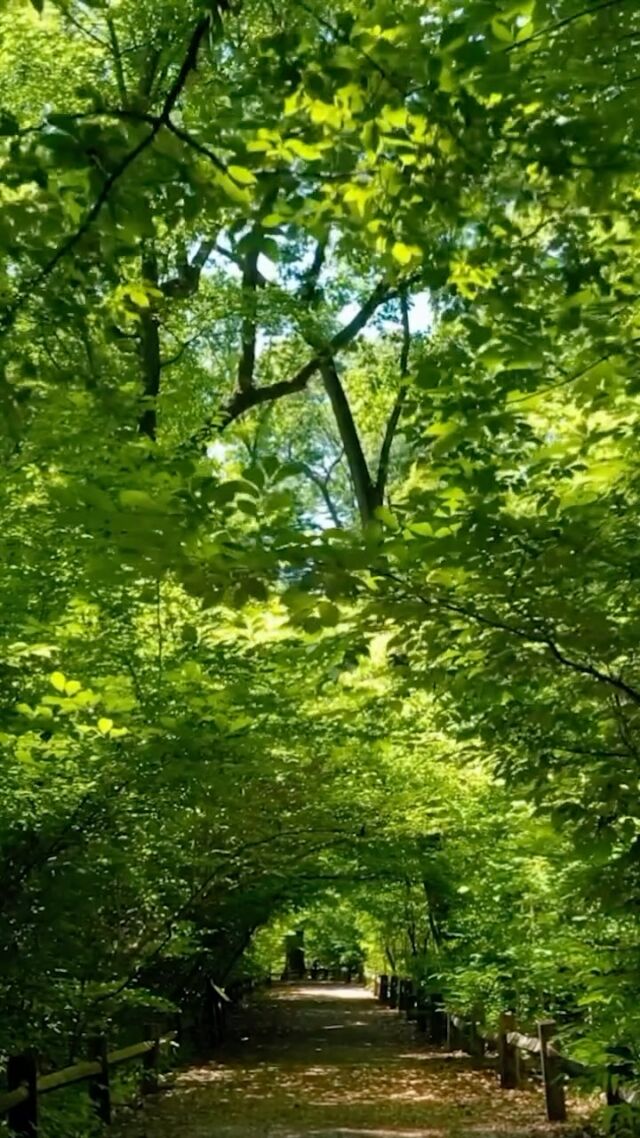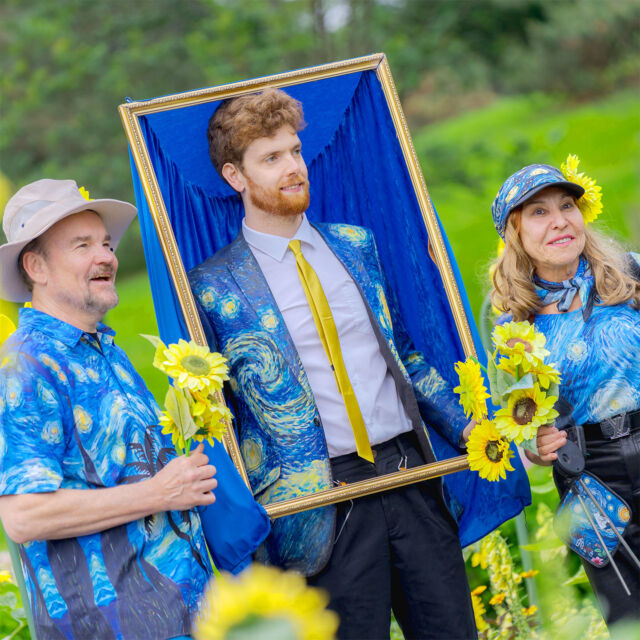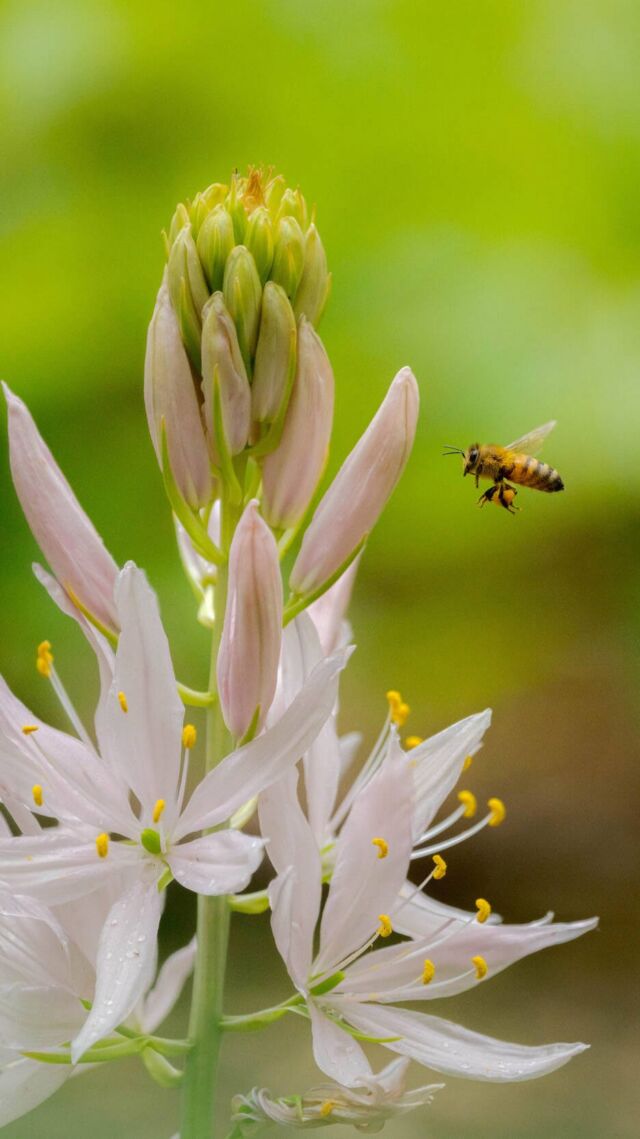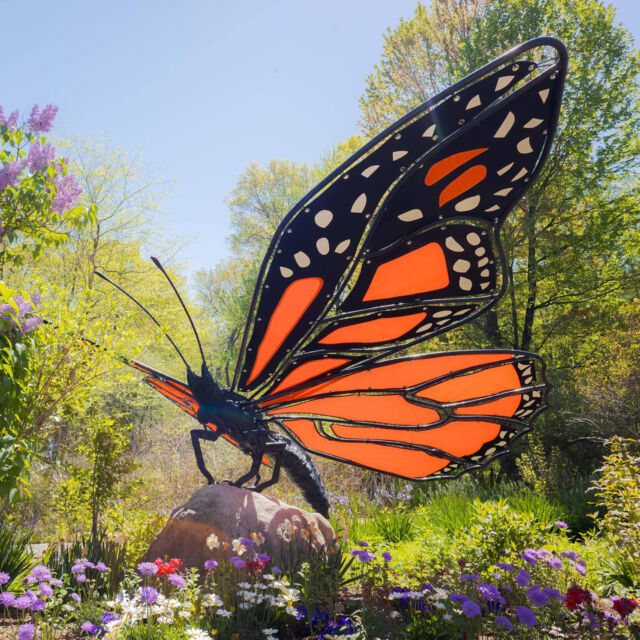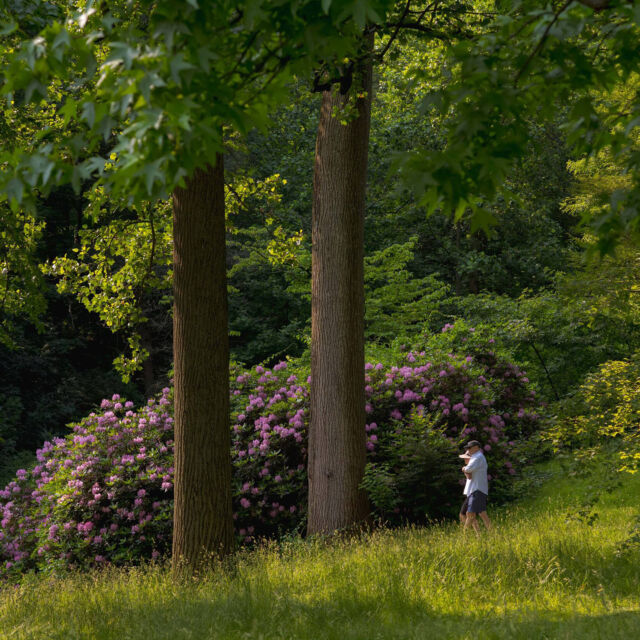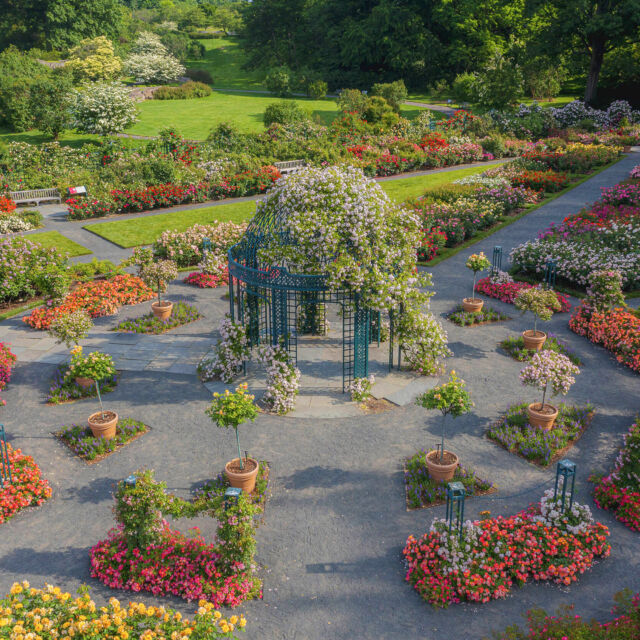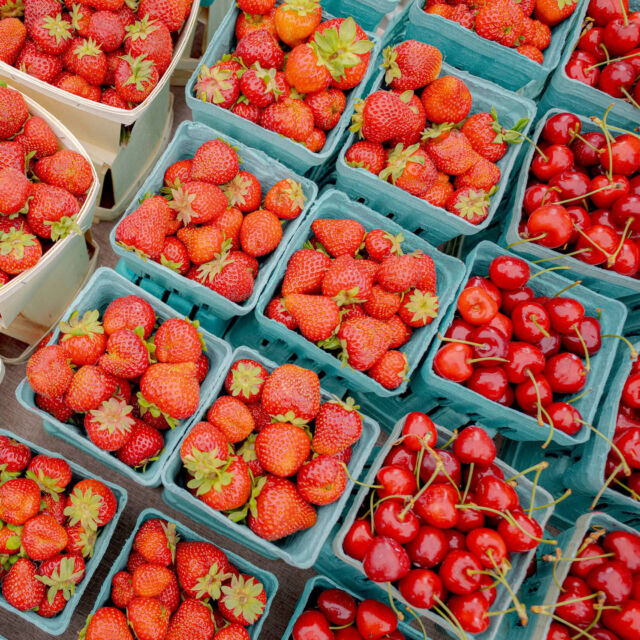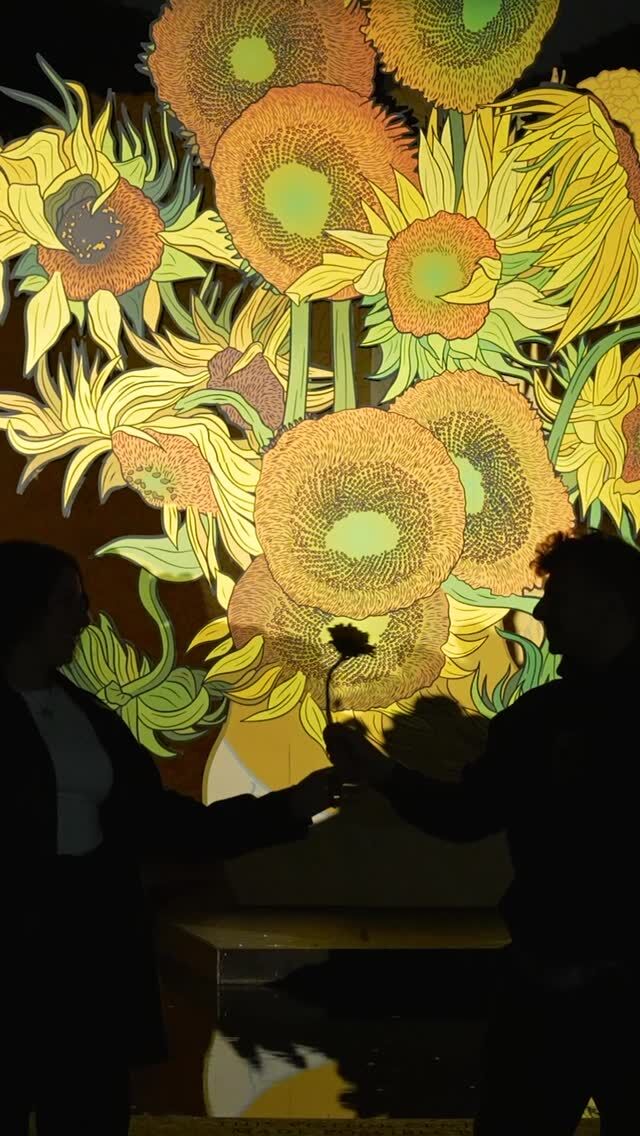Victory Gardens Make a Comeback
Stevenson Swanson is Associate Director of Public Relations at The New York Botanical Garden.
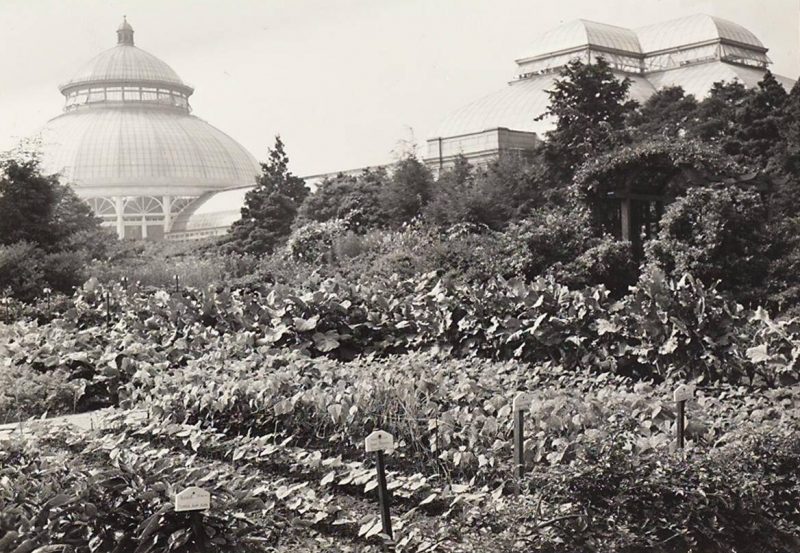
The NYBG Victory Garden, August 24, 1943
Along with new phrases such as social distancing and flattening the curve, a term from America’s past has been popping up in recent weeks: victory gardens.
As people shelter at home and think about ways to reduce the number of visits to the local grocery store, reports of dramatically higher sales of vegetable seeds and plants seem to indicate that victory gardens of homegrown vegetables are making a comeback. Growing vegetables is gratifying and does not require elaborate equipment or highly specialized skills. Yet some instruction for first-time or even veteran veggie gardeners can help prevent common mistakes and turn a scraggly patch of greens into a bountiful source of delicious, nutritious produce.
The New York Botanical Garden has a long history of teaching people how to grow plants for food. Even while NYBG is temporarily closed that work has not stopped: the Botanical Garden’s Adult Education program is offering four online classes this month for gardeners who want to grow their own food, whether in a backyard, an apartment, or even on a rooftop. Information about the courses is available through the NYBG at Home collection of online resources.
The “war” or “victory” garden movement started in World War I but took off during World War II as a way for ordinary citizens to take part in the war effort. Americans were encouraged to grow, can, and store vegetables to enhance self-sufficiency at home and to allow as much of the nation’s food supply as possible to be used to feed U.S. troops and hard-pressed allies.

An abundance of greens ready for harvest
The Garden’s LuEsther T. Mertz Library has a collection of brochures, photos, nursery seed catalogs, and other archival items that show how the victory garden movement grew from its modest beginnings in World War I. A poster from about 1944 features Mickey Mouse promoting a Green Thumb contest sponsored by the National Victory Garden Institute, with a grand prize of $2,000 in war bonds. The collection also includes the sheet music for the 1942 patriotic ditty Swing That Hoe and Watch Your Garden Grow.
Americans took that song’s recommendation to heart. Citizens hoed, watered, and weeded so assiduously that at one point during World War II, they produced an estimated 40 percent of the nation’s fresh vegetables, grown in about 20 million home, school, and community gardens.
The Garden’s Horticulture and Education staffs did their part to turn New Yorkers into accomplished urban farmers. Day and evening classes in vegetable gardening were held at the Garden, and staff members also participated in free lectures at The New York Times’ headquarters near Times Square and a six-week series of instructional talks at Macy’s department store on Herald Square.
Starting in 1942, an extensive victory garden was maintained on the grounds to show visitors how they could cultivate their own vegetables. Photos archived in the Mertz Library depict tidy rows of beans, cabbage, spinach, tomatoes, and many other vegetables sprouting in a large space in front of the Enid A. Haupt Conservatory.
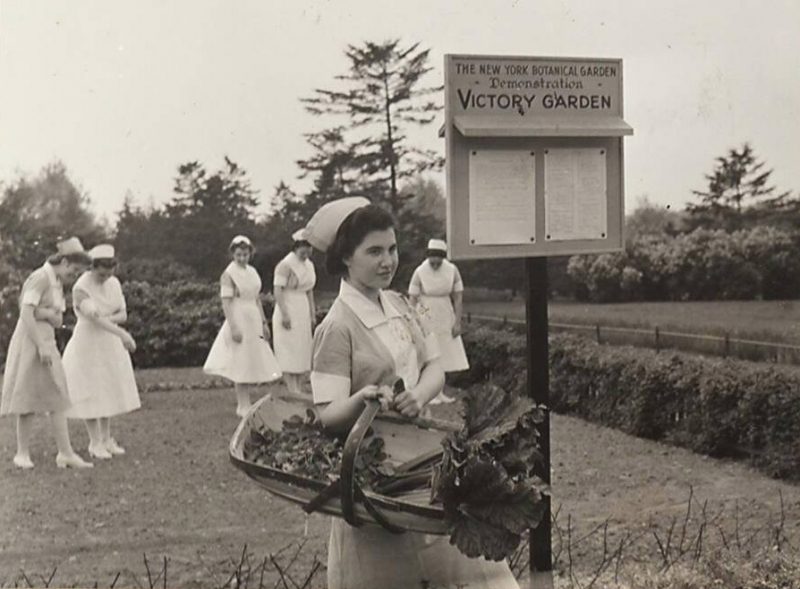
Fordham Hospital nurses receiving fresh vegetables from the Victory Garden
The productivity of this victory garden was remarkable. In 1942, more than 57 pounds of onions were harvested. All of the produce was donated to Fordham Hospital.
In the years since the war, America’s interest in growing vegetables has waxed and waned, but instruction and advice in edible gardening remain important parts of NYBG’s horticultural and educational missions. Bronx Green-Up, NYBG’s community gardening outreach program, provides horticulture education, training, and technical assistance to Bronx residents, community gardeners, urban farmers, local schools, and community organizations. Bronx Green-Up is currently working on a series of online videos about such seasonal chores as starting plants from seeds and preparing beds for planting.
Also, the Edible Academy, NYBG’s state-of-the-art educational facility, features activities and innovative programs that help children, families, teachers, and the general public learn about growing and preparing vegetables, fruit, and herbs. The Academy’s School Gardening 101 series, available through NYBG at Home, is an online resource of short videos, lesson plans, tip sheets, and other links for creating a successful school or home garden. In addition, the Director of the Edible Academy was interviewed recently about starting a vegetable garden on the podcast Bloom and Grow Radio.
NYBG’s extensive resources can go a long way toward ensuring a victorious outcome in the vegetable garden.
For surprising insights into some of the most popular plants that people grow in their vegetable gardens, see this post on the Hand Lens.
SUBSCRIBE
Enter your email address to subscribe to this blog and receive updates on new posts.
